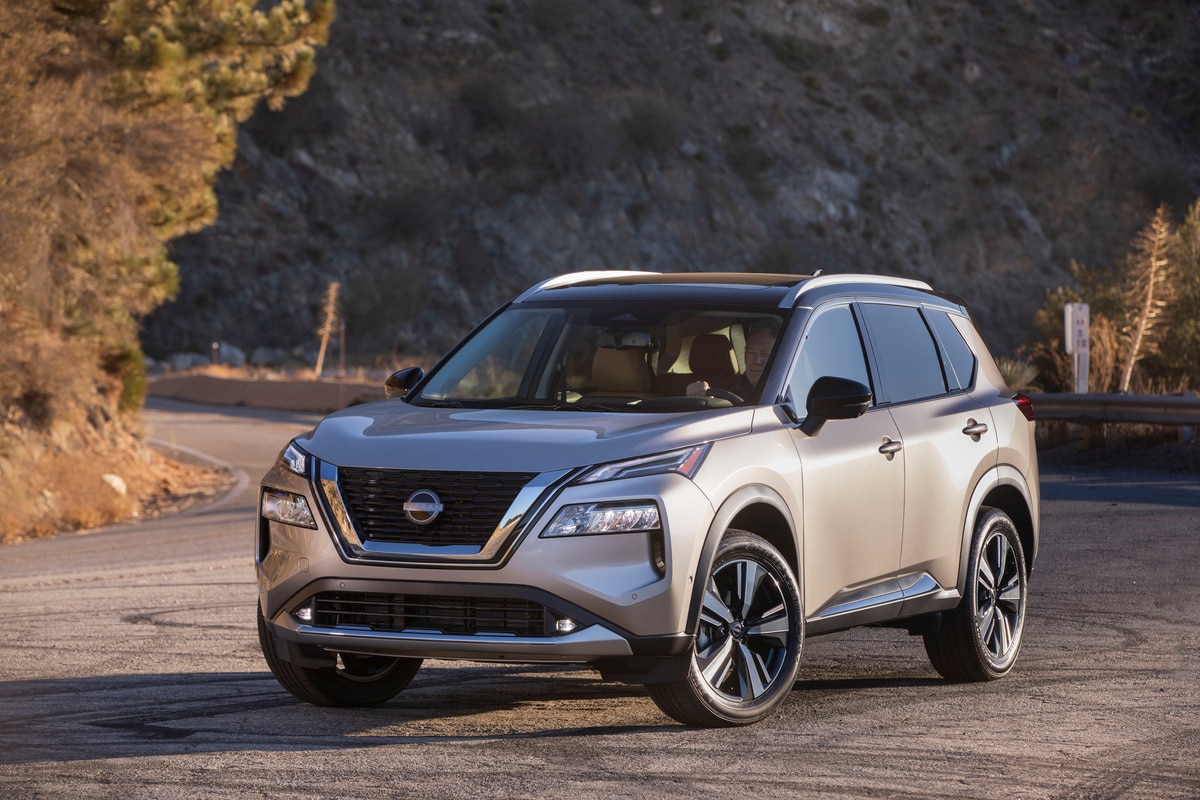2022 Toyota RAV4 vs. 2022 Nissan Rogue: Price, Fuel Economy, and Features Compared
These popular compact crossovers have a lot in common.
 Toyota/Nissan
Toyota/Nissan
Article QuickTakes
Compact SUVs have become the default choice for young families and commuters alike seeking spacious, versatile, and practical daily drivers. The Nissan Rogue and Toyota RAV4 are two leading lights in this segment, attracting scores of buyers with competitive pricing, a solid list of safety features, and efficient engine choices. Let’s see how the two compare in those areas.
 Nissan
Nissan
Toyota RAV4 vs. Nissan Rogue: Price
The Rogue S starts at $27,925, which is right in line with the $27,740 price attached to the RAV4 LE. The range-topping Rogue Platinum puffs up the base price to $37,705, which is also close to the RAV4 Limited's $36,240 sticker. The Hybrid opens at $30,290, while the RAV4 Prime demands at least $41,015, making it the most expensive version of the Toyota SUV.
 Nissan
Nissan
Toyota RAV4 vs. Nissan Rogue: Features
Both the entry-level Rogue S and RAV4 LE offer respectable levels of standard equipment, but there are key differences between base models. For instance, the Nissan's 8-inch infotainment screen is one inch larger than the unit found in the Toyota. Also, the Rogue's Safety Shield 360 suite of driver aids includes blind spot monitoring, front and rear automated emergency braking, rear-cross-traffic alert, lane-departure warning, and automatic high-beams. The Toyota Safety Sense 2.0 system mostly mirrors that list but adds adaptive cruise control and lane keeping and subtracts blind spot monitoring and rear emergency braking assistance.
The top-shelf Rogue Platinum comes with a fully digital gauge cluster and quilted leather upholstery, neither of which the RAV4 Limited offers. Toyota does have something Nissan doesn’t, however: a tough-looking, trail-focused edition. The RAV4 TRD Off-Road employs a rugged suspension system, all-terrain tires, a skid plate, and all-wheel drive.
 Toyota
Toyota
Toyota RAV4 vs. Nissan Rogue: Fuel Economy
There is but one engine option available with the Nissan Rogue: a 1.5-liter three-cylinder that makes 201 horsepower. EPA fuel mileage for front-wheel-drive S and SV Rogues is 30 mpg city and 37 mpg highway. Subtract one mpg from each measure to get the ratings for the heavier SL and Platinum trim levels. Adding all-wheel drive drops the Rogue’s mileage to 28 mpg city and 35 mpg highway for S and SV models and 28 and 34 for the SL and Platinum.
In contrast, the Toyota crossover features a trio of powertrain choices, two of which are hybrids. The gas-only 203-hp RAV4, which achieves 27 mpg city and 35 mpg highway, is thirstier than the base Rogue, and the all-wheel-drive TRD Off-Road model sees only 25 mpg city and 32 mpg highway.
The frugal electrified powertrains perform much better. The RAV4 Hybrid gets 41 mpg around town and 38 mpg on the interstate, and the plug-in RAV4 Prime sees 94 MPGe and offers 42 miles of EV range on a full charge. On an empty battery, the Prime still posts a respectable 38 mpg in combined driving.



